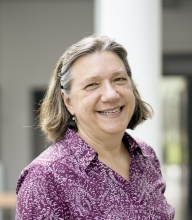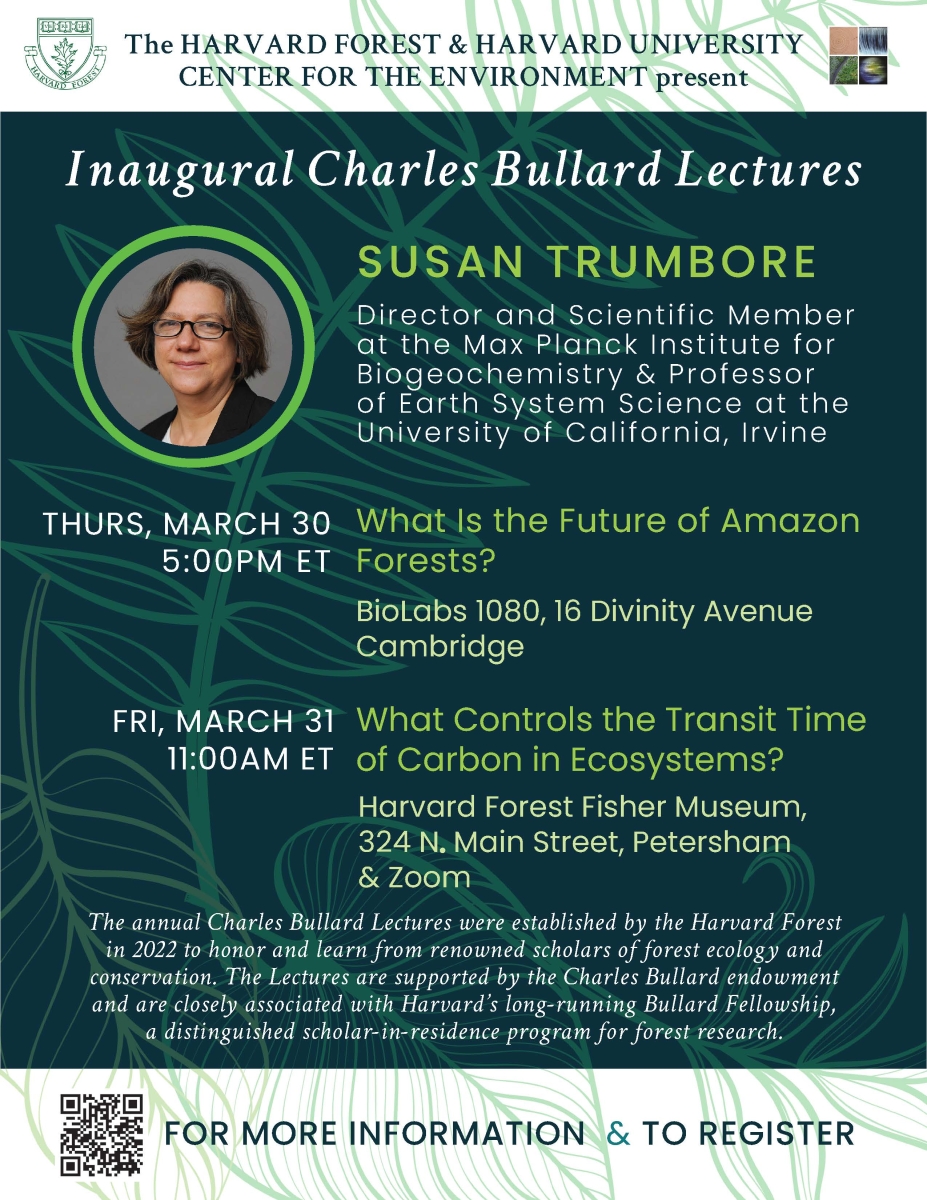You are here
March 30 & 31: Susan Trumbore Presents Inaugural Bullard Lectures

The Harvard Forest and the Harvard University Center for the Environment are delighted to co-present the Inaugural Charles Bullard Lectures featuring Dr. Susan Trumbore, Director and Scientific Member at the Max Planck Institute for Biogeochemistry and Professor of Earth System Science at the University of California, Irvine.
The annual Charles Bullard Lectures were established by the Harvard Forest in 2022 to honor and learn from renowned scholars of forest ecology and conservation. The Lectures are supported by the Charles Bullard endowment and are closely associated with Harvard’s long-running Bullard Fellowship, a distinguished scholar-in-residence program for forest research.
Trumbore's lectures in Cambridge (in-person, March 30) and in Petersham (in-person and online, March 31) will cover the future of Amazon forests and the transit time of carbon in ecosystems.
What Is the Future of Amazon Forests?
Thursday, March 30; 5:00 PM | BioLabs 1080, 16 Divinity Ave, Cambridge
Tropical forests process more carbon, water, and energy, and are more diverse than any other land ecosystem. The Amazon Basin contains the largest continuous tropical forest in the world and plays a key role in global climate and atmospheric composition. Amazon forests and soils contain large stores of carbon that are potentially vulnerable to climate change and deforestation and are globally important sources and sinks of carbon. How these systems will respond to climate change and their overall resilience to deforestation are major uncertainties of global importance. This talk will report on how two major collaborative projects in the Brazilian Amazon are filling gaps in our understanding of this key ecosystem and helping to predict the future of Amazon forests. The Amazon Tall Tower Observatory in the central Amazon, brings together more than 200 researchers who study the complex interactions between tropical forests, atmosphere and climate. To the southeast is the drier Amazon ‘arc of deforestation’, where we explore the resilience of forests to human disturbances and climate change. This region has been proposed as one where forests are poised to cross a ‘tipping point’ with the potential to dramatically affect forests and their inhabitants.
What Controls the Transit Time of Carbon in Ecosystems?
Friday, March 31; 11:00 AM | Zoom & Harvard Forest Fisher Museum, 324 N. Main St, Petersham
Registration not required for in-person event (see the Zoom recording here)
How long does C remain in ecosystems before it is returned to the atmosphere? The answer is important because it tells us how long we might be able to manage vegetation and soils to store carbon. The major measure we have used for this is the ‘turnover time’, estimated as the inventory of carbon divided by the input or output rates. However, a single number is not sufficient to integrate the complex cascade of processes that return C fixed by photosynthesis to the atmosphere. This talk will discuss how the global isotope tracer of bomb radiocarbon can provide a means to estimate the distribution of ages of C being respired from ecosystems. Dr. Trumbore will use data from the new International Soil Radiocarbon Database to demonstrate how transit time distributions change globally, suggest how we can use this information to test global carbon cycle models, and what we can learn about managing soils to take up carbon.


